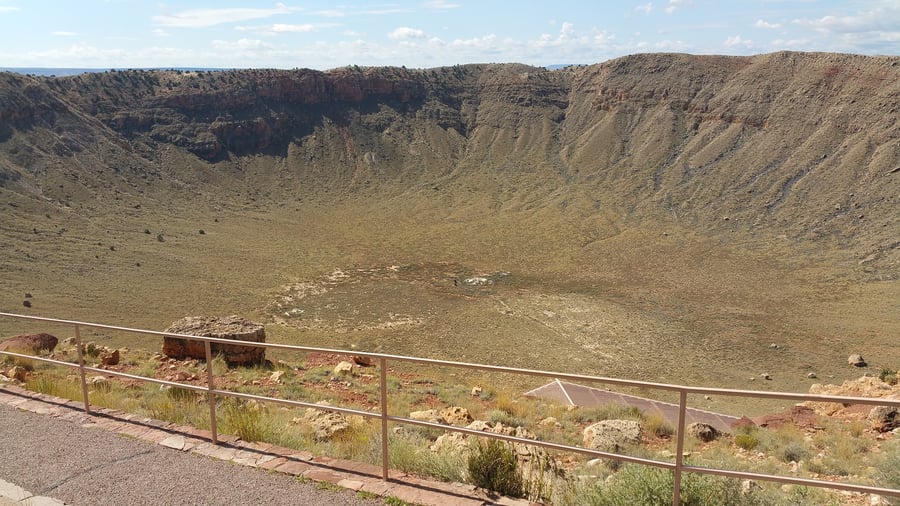
Meteor Crater Natural Landmark AZ
Motorcyclist Map

Places Filter: Landscapes
View In Google Maps: https://goo.gl/maps/YTLyw1LXJPxyfBc37
Description: Meteor Crater, also known as Barringer Crater, is a natural landmark located in northern Arizona, USA. It is one of the most well-preserved impact craters on Earth and holds significant scientific, geological, and educational value. Here are some key details about Meteor Crater: Formation: Meteor Crater was formed approximately 50,000 years ago during the Pleistocene epoch when a meteorite, estimated to be about 150 feet (45 meters) in diameter, collided with the Earth. The impact released an enormous amount of energy, excavating a crater nearly 4,000 feet (1,200 meters) wide and 570 feet (174 meters) deep. Location: Meteor Crater is situated in the high desert of northern Arizona, about 6 miles (9.7 kilometers) south of Interstate 40 and the town of Winslow. It is in the vicinity of Flagstaff and is easily accessible for visitors traveling through the region. Geological Features: The crater's rim rises about 150 feet (46 meters) above the surrounding desert floor and provides an excellent vantage point for viewing the crater's interior. It features a rugged and rocky landscape with an exposed layer of Coconino Sandstone. Visitor Center: Meteor Crater is home to a modern visitor center that offers educational exhibits, interactive displays, and a theater presentation about the crater's formation and impact. The visitor center provides valuable insights into meteorite impacts and planetary science. Observation Deck: The visitor center also features an observation deck that allows visitors to view the crater from a safe distance. Powerful telescopes and informative guides are available to enhance the experience. Impact Hypotheses: Meteor Crater played a significant role in the early understanding of impact cratering processes. The study of this crater contributed to the development of the impact hypothesis for the extinction of the dinosaurs. Research: Meteor Crater continues to be a site for scientific research, including studies related to impact cratering, planetary science, and astrobiology. Researchers come to the crater to investigate the geological features and impact effects. Education: The site serves as an educational resource for students, educators, and the public. It offers guided tours, educational programs, and opportunities for school groups to learn about Earth's geological history and the impact of meteorites. Preservation: Meteor Crater is recognized as a significant geological feature and is preserved for both scientific research and educational purposes. Visitors are encouraged to explore the crater's rim and the surrounding area while respecting the guidelines set to protect this natural landmark.